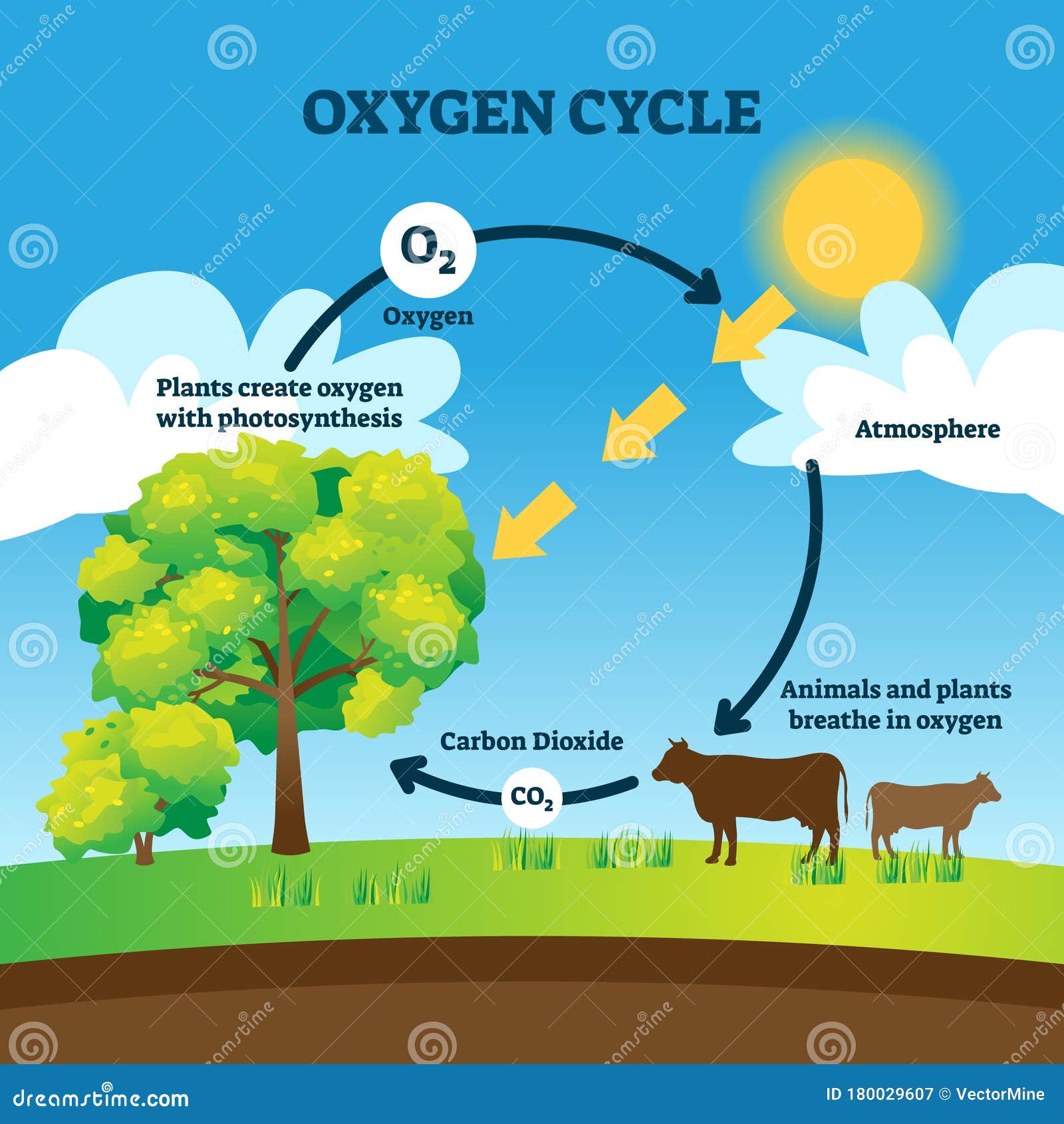
However this would require pure oxygen which is not available in practice for economic reasons. 5 shows the phases present at equilibrium in the Fe-Ni-O 2 system at 1200 oC as the equilibrium oxygen partial pressure ie.
Oxygen cycle circulation of oxygen in various forms through nature.
Carbon and oxygen cycle diagram. The biogeochemical cycle that describes the movement of oxygen in the atmosphere air the biological matter of the ecosystem biosphere the global sum of all ecosystems and the lithosphere earths crust. Only a small percentage of the worlds oxygen is present in the atmosphere only about 035. This exchange of gaseous oxygen happens through Photolysis.
Aerobic carbon oxygen cycle P producer K consumer D decomposer Datum. Carbon oxygen cycle anaerobicsvg. SVGErstellung Der Quelltext dieser SVG-Datei ist Dieses Diagramm wurde mit Inkscape erstellt.
This SVG diagram uses embedded text that can be easily translated. Flow of Oxygen and Carbon Dioxide Mind Map Use Createlys easy online diagram editor to edit this diagram collaborate with others and export results to multiple image formats. We were unable to load the diagram.
You can edit this template and create your own diagram. Carbon and oxygen are two elements that are essential to life. They are naturally present in the atmosphere in the form of carbon dioxide and gaseous oxygen.
Because theyre always circulating between the soil the air and the water living matters constantly renewed. Atmospheric oxygen comes mainly from green plants. When theyre exposed to light green plants use carbon dioxide from the atmosphere to manufacture living matter and release oxygen.
Carbon cycle explains the movement of carbon between the earths biosphere geosphere hydrosphere and atmosphere. Carbon is an important element of life. Carbon dioxide in the atmosphere is taken up by the green plants and other photosynthetic organisms and is converted into organic molecules that travel through the food chain.
The oxygen cycle and the carbon cycle are closely related as they both involve photosynthesis and cellular respiration. Carbon dioxide is taken in by producers to undergo photosynthesis and oxygen is released as a bi-product. Cellular respiration takes oxygen from the atmosphere and releases carbon dioxide.
In the image to the left you see that carbon makes up all living things. This means that all. Carbon Cycle Diagram.
The carbon cycle diagram below explains well the flow of carbon along different paths - Image will be Uploaded Soon Carbon Cycle on Land. Carbon in the atmosphere is present in the form of carbon dioxide. Carbon enters the atmosphere through natural processes like respiration and industrial applications like burning fossil fuels.
The fast carbon cycle involves relatively short-term biogeochemical processes between the environment and living organisms in the biosphere see diagram at start of article. It includes movements of carbon between the atmosphere and terrestrial and marine ecosystems as well as soils and seafloor sediments. The fast cycle includes annual cycles involving photosynthesis and decadal cycles involving vegetative growth and decomposition.
The reactions of the fast carbon cycle. Hydrogen sulfide chemosynthesis process. Giant tube worms use bacteria in their trophosome to fix carbon dioxide using hydrogen sulfide as an electron and oxygen or nitrate as an energy source and produce sugars and amino acids.
Some reactions produce sulfur. 18H 2 S 6CO 2 3 O 2 C 6 H 12 O 6 carbohydrate 12H 2 O 18 S. Oxygen cycle circulation of oxygen in various forms through nature.
Free in the air and dissolved in water oxygen is second only to nitrogen in abundance among uncombined elements in the atmosphere. Plants and animals use oxygen to respire and return it to the air and water as carbon dioxide CO 2. Carbon Cycle The Greenhouse Effect.
A colorless odorless gas consisting of molecules made up of two oxygen atoms and one carbon atom. A colorless odorless non-toxic gas consisting of molecules made up of four hydrogen atoms and one carbon atom. A colorless non-flammable gas with a sweetish odor commonly known as laughing gas and sometimes.
However many useful phase diagrams can be drawn which involve variables other than T and composition. The diagram in Fig. 5 shows the phases present at equilibrium in the Fe-Ni-O 2 system at 1200 oC as the equilibrium oxygen partial pressure ie.
Chemical potential is varied. The x-axis of this diagram is the overall molar metal ratio in the. Carbon Dioxide CO2 is taken out of the air by plants through photosynthesis.
Plants take in carbon dioxide CO2 and release oxygen O2. Chlorophyll absorbs sunlight for photosynthesis. BOTH plants and animals release carbon dioxide CO2 into the air through cellular respiration in mitochondria.
Well more unlikely until humans started to pull it out of the Earth and burn it for electricity production. When that combustion of fossil fuels takes place carbon with hydrogen atoms attached to it hydrocarbons is transformed to carbon with oxygen attached to it carbon monoxide and carbon dioxide. The image on the left below shows the percentage of carbon dioxide from the combustion of.
Has been shown that carbon dioxide concentrations of nearly 100Vol- can be achieved theore-tically. However this would require pure oxygen which is not available in practice for economic reasons. Therefore it is also shown how the achievable carbon dioxide concentration depends on the oxygen.
Compare and Contrast the Nitrogen Cycle and Carbon Cycle Carbon Cycle The continuous process by which carbon is exchanged between organisms and the environment. Important processes in the carbon cycle are photosynthesis deposition and DECOMPOSITION. Carbon dioxide is absorbed.
Food is oxidized to release carbon dioxide and water false oxygen is released and not carbon dioxide Oxygen is taken and carbon dioxide and water vapour are given out false CO 2 is taken and oxygen is given out Answer. B Sunlight free energy is converted into carbohydrates potential energy using water and carbon dioxide. Oxygen is released in the process.
